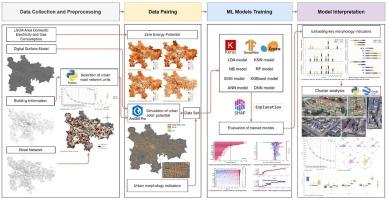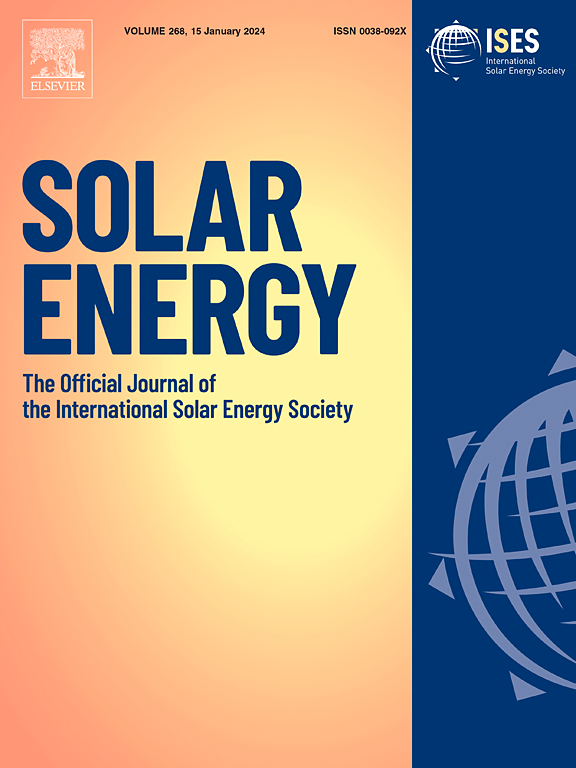释放高纬度城市地区的太阳能潜力:格拉斯哥形态指标和零能耗潜力研究
IF 6
2区 工程技术
Q2 ENERGY & FUELS
引用次数: 0
摘要
城市形态的复杂性会对太阳能的利用产生重大影响。虽然已有大量研究探讨了城市形态对太阳能潜力的影响,但在高纬度城市优化太阳能利用仍是一个具有挑战性的课题。在本研究中,我们以高纬度城市格拉斯哥为研究对象,以城市网格单元中的住宅建筑为样本。我们利用 Digimap 数据库和 ArcGIS Pro 平台计算了这些建筑的太阳能潜力和城市形态指标。我们采用八种机器学习算法对数据进行分析,提取出影响城市网格单元太阳能潜力的八个关键形态指标。在这些指标中,我们选取了屋顶坡度、建筑密度、容积率和建筑周边形状系数四个指标进行聚类分析,从而根据其特征和太阳能潜力将城市建筑形态划分为五种类型。我们的计算表明,有效利用太阳能为格拉斯哥提供了巨大的零能耗潜力。这项研究的结果可以为城市规划和设计的早期阶段提供有价值的指导,帮助决策者合理利用太阳能资源,实现城市的可持续发展。此外,研究结果还有助于城市利益相关者识别不同建筑形式的太阳能潜力差异,帮助他们选择合适的建筑类型和区域,最大限度地利用太阳能。本文章由计算机程序翻译,如有差异,请以英文原文为准。

Unlocking solar potential in high-latitude urban areas: A study of morphological indicators and zero energy potential of Glasgow
The complexity of urban form can have a significant impact on the utilization of solar energy. While numerous studies have examined the influence of urban form on solar potential, the optimization of solar energy use in cities located at high latitudes remains a challenging subject. In this study, we focus on the high-latitude city of Glasgow, using residential buildings in urban grid cells as our sample. We calculate solar potential and urban form indicators for these buildings using the Digimap database and the ArcGIS Pro platform. Employing eight machine learning algorithms, we analyze the data and extract eight key morphological indicators that affect the solar potential of urban grid cells. Among these indicators, we select four indicators—roof slope, building density, plot ratio, and building perimeter shape factor—for cluster analysis, enabling us to classify urban building forms into five types based on their characteristics and solar potential. Our calculations demonstrate that effective utilization of solar energy offers significant zero energy potential for Glasgow. The findings of this research can provide valuable guidance in the early stages of urban planning and design, assisting policymakers in rationalizing the use of solar energy resources for sustainable urban development. Furthermore, the results help urban stakeholders identify variations in the solar potential of different building forms, aiding them in selecting appropriate building types and zones to maximize solar energy utilization.
求助全文
通过发布文献求助,成功后即可免费获取论文全文。
去求助
来源期刊

Solar Energy
工程技术-能源与燃料
CiteScore
13.90
自引率
9.00%
发文量
0
审稿时长
47 days
期刊介绍:
Solar Energy welcomes manuscripts presenting information not previously published in journals on any aspect of solar energy research, development, application, measurement or policy. The term "solar energy" in this context includes the indirect uses such as wind energy and biomass
 求助内容:
求助内容: 应助结果提醒方式:
应助结果提醒方式:


